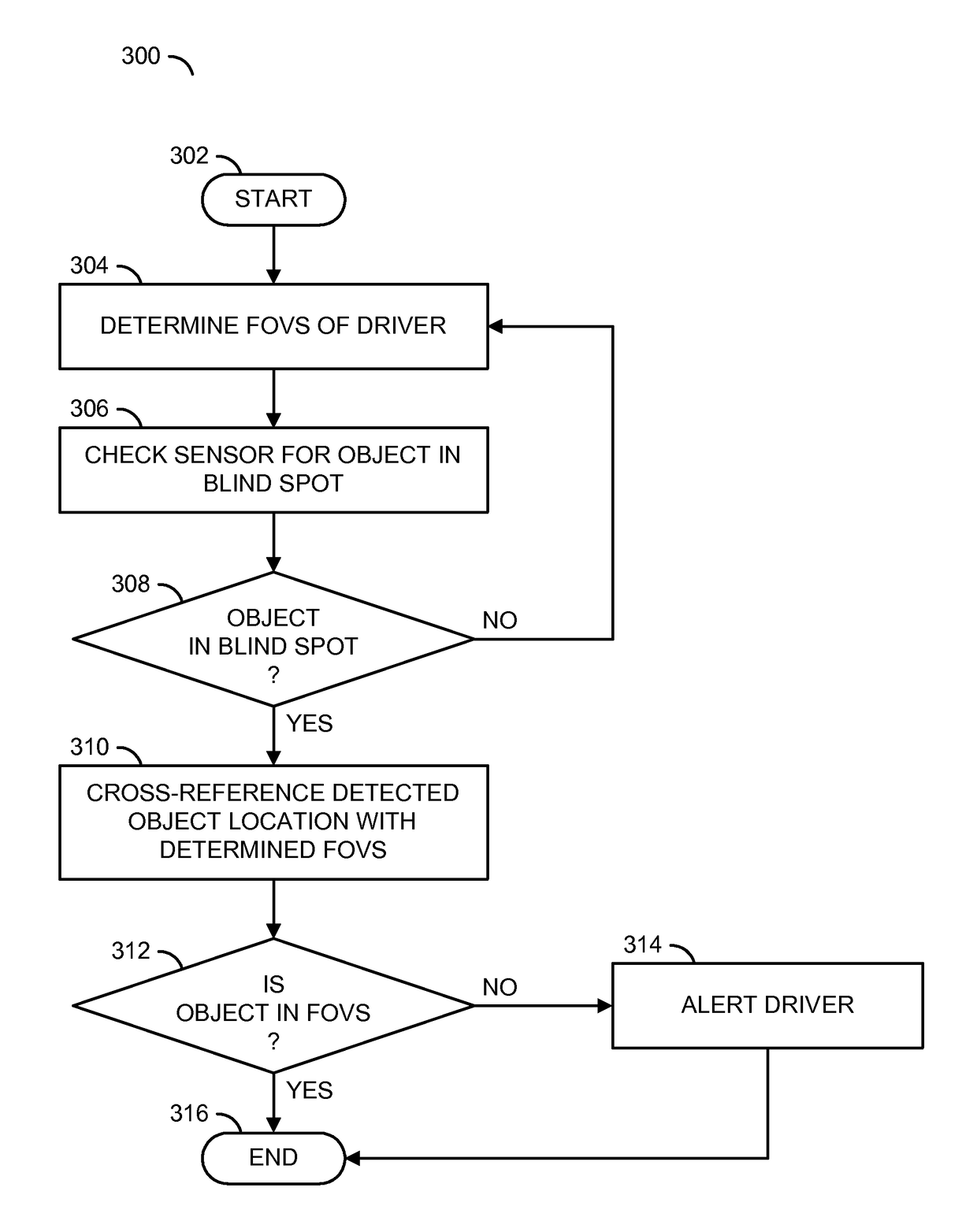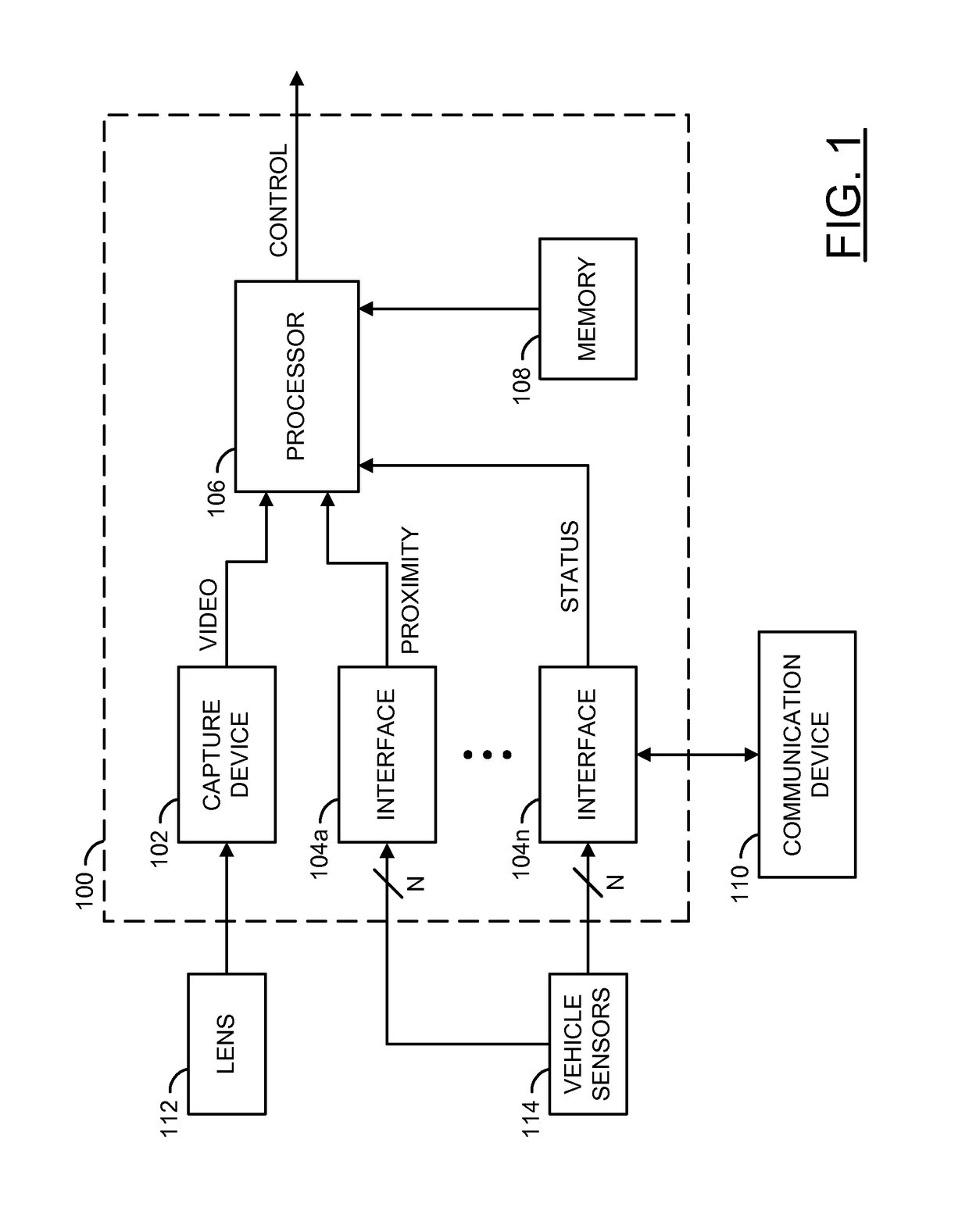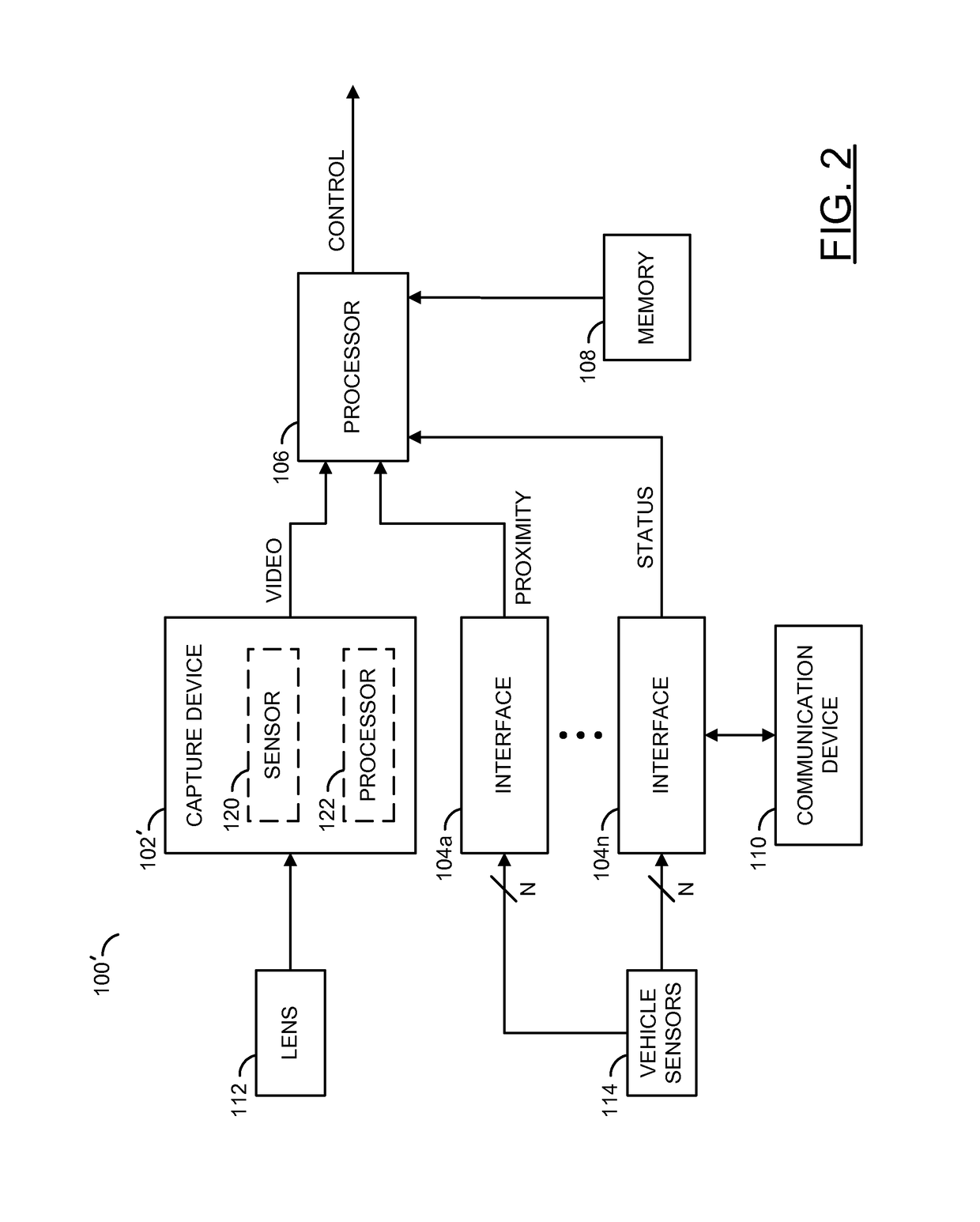Blind-spot monitoring using machine vision and precise FOV information
a technology of machine vision and blind spots, applied in the field of video capture devices, can solve problems such as accidents between vehicles, blind spots, blind spots, etc., and achieve the effect of improving object detection
- Summary
- Abstract
- Description
- Claims
- Application Information
AI Technical Summary
Benefits of technology
Problems solved by technology
Method used
Image
Examples
embodiment 150
[0021]Referring to FIG. 3, an embodiment 150 illustrating the capture device 102 detecting the driver of an automobile / vehicle 50 is shown. The camera system 100 is shown inside the vehicle 50. The capture device 102 is shown inside the vehicle 50. A driver 152 is shown seated in the vehicle 50. A side view mirror 154 is shown attached to the vehicle 50. Sensors 114a-114b are shown on (or in) the vehicle 50.
[0022]The camera system 100 is shown in the rear of the vehicle 50. A location of the camera system 100 may be varied according to the design criteria of a particular implementation. For example, in some embodiments, the vehicle 50 may allow for installation of the camera system 100 in a rear end of the vehicle 50. In other embodiments, the vehicle 50 may allow for installation of the camera system 100 in a front end of the vehicle 50. For example, the camera system 100 may be installed near and / or with the capture device 102 (e.g., in a dashboard of the vehicle 50). In another e...
embodiment 200
[0027]Referring to FIG. 4, an embodiment 200 illustrating determined fields of view and blind-spot detection is shown. An overhead (e.g., birds-eye-view) of the vehicle 50 is shown. Objects 52a-52n are shown around the vehicle 50. The objects 52a-52n may be nearby cars (or vehicles, or pedestrians, or structures, etc.).
[0028]The vehicle 50 is shown having mirrors 154a-154c. The mirror 154a may be a side view mirror on the driver side of the vehicle 50. The mirror 154b may be a rear view mirror of the vehicle 50. The mirror 154c may be a side view mirror on the passenger side of the vehicle 50. The number and / or types of the mirrors 154a-154c may be varied according to the design criteria of a particular implementation.
[0029]The vehicle 50 is shown having sensors 114a-114d. The sensors 114a-114d may be configured to detect nearby objects (e.g., proximity sensors). For example, the sensors 114a-114n may be implemented as radar devices and / or sonar devices. The sensors 114a-114n may be...
PUM
 Login to View More
Login to View More Abstract
Description
Claims
Application Information
 Login to View More
Login to View More - R&D
- Intellectual Property
- Life Sciences
- Materials
- Tech Scout
- Unparalleled Data Quality
- Higher Quality Content
- 60% Fewer Hallucinations
Browse by: Latest US Patents, China's latest patents, Technical Efficacy Thesaurus, Application Domain, Technology Topic, Popular Technical Reports.
© 2025 PatSnap. All rights reserved.Legal|Privacy policy|Modern Slavery Act Transparency Statement|Sitemap|About US| Contact US: help@patsnap.com



